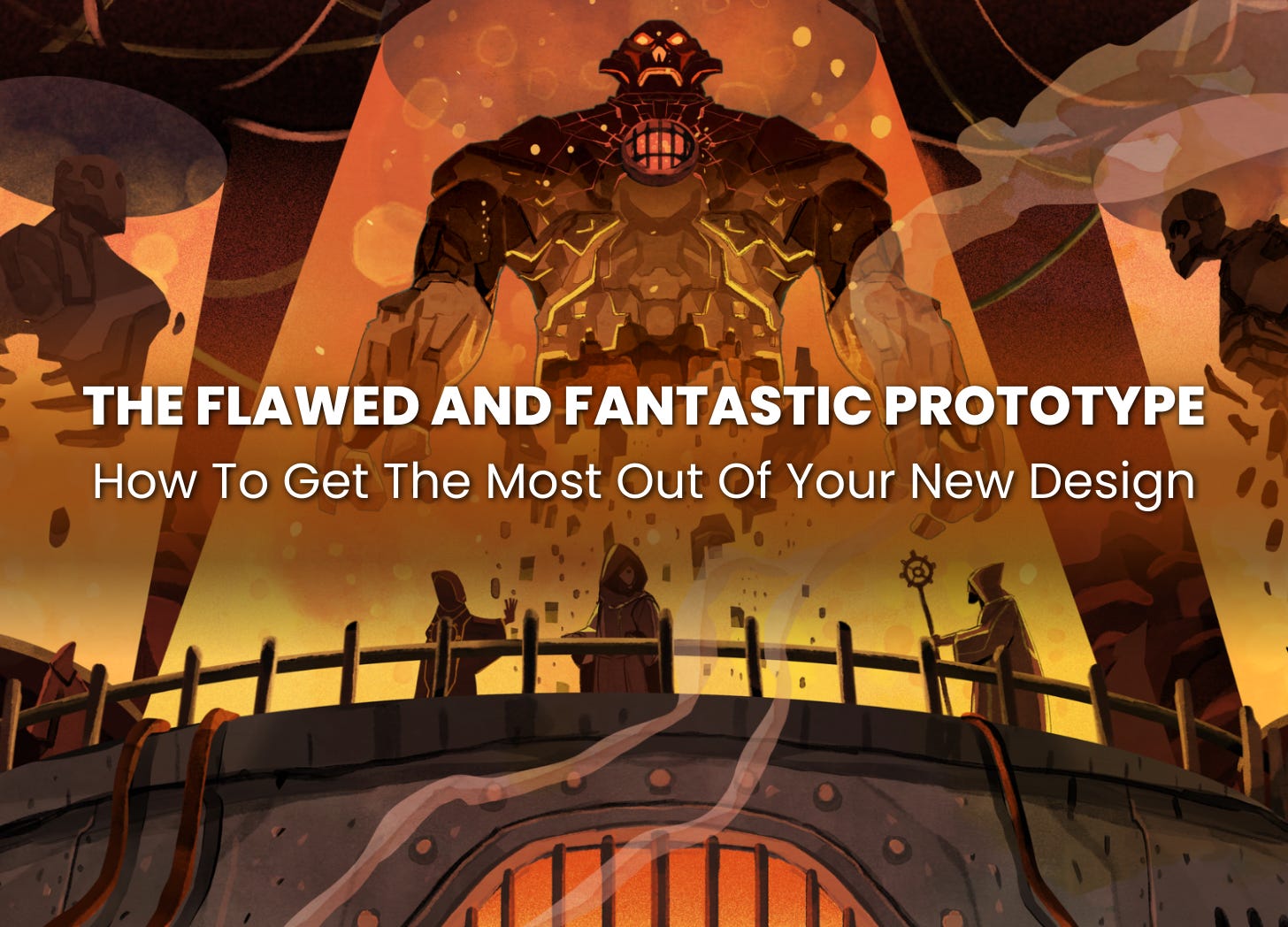Even the most exceptional game designs must be prototyped and tested before being ready for the public. Prototyping is not about perfection; it's about bringing your core game concept from the abstract brainstorm into tangible form efficiently and economically so you can test and refine your ideas.
Understanding Prototyping
A prototype is the heartbeat of your game in its rawest form, designed to test fundamental mechanics or features. Through iterative testing, this blueprint evolves, guiding you toward the final version.
Breaking down a prototype, we find three integral elements:
Rules: An initial set of guidelines for your game, which may start as shorthand notes or verbal instructions. The key? Document everything. Even in their infancy, these written rules are the backbone of your testing process, serving as reference points for iterations. Record your rules religiously because hindsight cannot be relied upon in game development. At first, bullet points and outlines are fine, but within a few iterations, you will want to move to full-text rules and see if players can learn from those.
Components: These are the tangible elements that breathe life into gameplay. They’re rudimentary yet crucial, representing all necessary information for player interaction. Your goal here isn’t sophistication but functionality. Ask yourself what information the player needs to know and what actions they will need to take. At early stages, components should be the minimum necessary to support the player.
Questions: These are your compass. Before diving into playtesting, identify the questions tailored to the core concepts under scrutiny. Your prototype is your experiment, and these questions are your hypothesis—what are you trying to prove or disprove? When you test a game, you should have a few primary questions you are trying to answer to focus your testing.
Entering the world of prototyping can be daunting because it’s the first place where others judge your ideas. Many designers fall into the trap of not testing their ideas for refinement, a pivotal stage in the design process. Below are some key principles to help you prototype your game.
Get access to an exclusive newsletter with additional content from me by becoming a paid subscriber. Paid subscriptions allow me to invest more time into the podcasts and newsletters while keeping much of it free to the public. If you feel these newsletters and podcasts inspire, entertain, or inform you, I hope you consider subscribing or upgrading.
Key Principles of Prototyping
Principle 1: Embrace Imperfection.
Accept this: Your prototype will be flawed, but that’s its charm. Striving for a flawless debut will stifle progress. Welcome missteps as they are the stepping stones towards refinement and innovation. The purpose of a prototype is to be flawed—that is how you learn and improve. Never gauge your initial efforts against the finished games you find on a store shelf because every great game once began as a deeply flawed prototype. Keep iterating, refining, and, most importantly, keep playing.
Principle 2: Cultivate Simplicity.
Prototyping is time-consuming. To mitigate the burden, adopt a minimalist approach. Use accessible resources, simulate game features in the most basic forms, and remember, you're testing a concept, not showcasing a final product. Use the game components you already have, like meeples, dice, cards, etc. Avoid the pitfall of incorporating finalized artwork or incurring expenses to create new types of components. Early stages should focus on core mechanics, favoring rapid, successive iterations over elaborate prototypes.
Principle 3: Identify Your Ideal Testers.
Not all feedback is equal. Early-stage prototypes, stripped of aesthetic appeal, require an audience that can discern the underlying mechanics. Seek out fellow game designers or enthusiasts who can provide constructive, focused insights. As you refine your prototype, gradually expand your audience of testers. Find members of your target audience and test with them. Prioritize feedback from those players that align with the key questions you are trying to answer with that prototype.
Principle 4: Mentally Prototype First
Before making a physical your prototype, mentally immerse yourself in the game. Visualize the player's journey, motivations, and challenges. What are they incentivized to do? Do they have all the information they need? Is there a clear buildup and climax to the game experience? This mental rehearsal uncovers loopholes and areas needing recalibration, saving you potential rounds of revision and work on a physical prototype.
Principle 5: Have Flexible Tools.
The easier it is to modify your prototype, the less resistance you will have walking through the iterative cycle. Prototyping with cards and pieces on a board that can easily be swapped out or written on with a marker is far easier than recoding a level that doesn’t work. As you move through each iteration cycle and thus become more and more confident in key pieces of your design, you can invest in more detailed, harder-to-change prototypes and thus reach out to wider audiences for feedback.
If you have any questions or comments regarding prototypes, please feel free to start a discussion in the comments section below. I’d love to hear your thoughts!






Excellent article, thanks Justin! Currently in the "write out the rules and mentally prototype" phase of deck-building RPG. :)